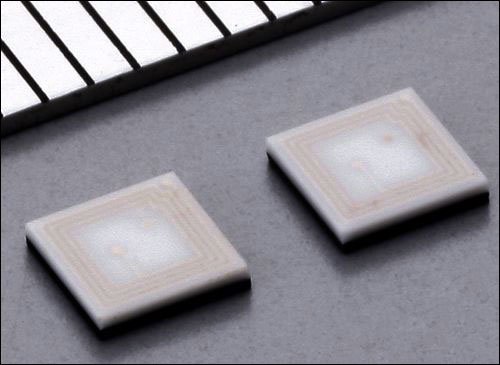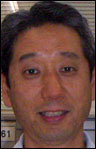Oct 11, 2012Electronic component manufacturer Murata Manufacturing Co. indicates that by the end of this month, it will begin shipping in large volumes what it believes to be the world's smallest high-frequency (HF) tag. Measuring 3.2 millimeters (0.13 inch) in width and length and 0.7 millimeter (0.03 inch) in thickness, the tag (model LXMS33HCNG-134) is one-tenth the size of most other HF tags. Murata's version is designed to be both durable and small, with a ceramic substrate enclosing a layered circuit board and an antenna.
Murata produces ultrahigh-frequency (UHF) RFID tags, as well as components used to create readers of 13.56 MHz HF tags. However, this is the first time the firm is producing an HF tag. The new tag comes with an NXP Semiconductors Icode SLIX integrated circuit (compliant with the ISO 15693 standard) and its own self-contained antenna. The tag is the latest to employ Murata's Magicstrap RFID technology—previously used only for UHF tags (see Electronics Factory Uses RFID to Manage Assembly of Cisco Circuit Boards)—designed to make RFID-tagging possible in places that larger tags could not be utilized, due to either size constraints or environmental conditions.
Murata accomplishes the small size of its HF tag (with a built-in antenna) due to the multi-layer approach of its Magicstrap technology, according to Kaz Higashibata, the company's RFID project manager. Murata's multi-layer circuit board, which it uses for its UHF tags as well, includes more than 10 layers (the details of this layering process are proprietary). "We have a lot of know-how in the RFID side, and a lot is based on the multi-layer technology," he states. As the tag is manufactured, the antenna is placed in the ceramic material of the tag's substrate, and is then fired at a low temperature.
The HF tag, which can be applied to items containing an adhesive, offers 1024 bits of memory and a maximum read range of about 15 millimeters (0.6 inch), which is shorter than that of many other high-frequency models. Higashibata believes that the shorter read range should not greatly affect end users, since HF tags are typically deployed for applications in which an individual taps a reader directly against a tag in order to capture data.
According to Gerry Hubers, the business development manager of Murata Americas, Murata has received inquiries about the tag from around the world, including customers seeking to tag a variety of items, such as eyeglasses, cables and sporting goods. There is also interest in using the tags to monitor medical instruments and vials, adds Dimitri Desmons, the company's RFID consultant. What's more, Desmons adds, in Asia, as well as increasingly throughout the world, there is an interest in employing HF tags to enable functions on a cell phone. For example, he says, a tag could be located somewhere within a car—such as on the dashboard—that, when tapped by an NFC-enabled mobile phone, would prompt the handset to enter silent mode.
"I think more applications will be found," Desmons says, noting that end users are already approaching the company with new ideas.
Murata expects to market the HF tags worldwide, and has begun producing them in quantities of one million units per month. Samples are priced at about 100 yen ($1.28) apiece, but when purchased in large volumes, the tag will cost less than 40 cents. The firm also intends to continue expanding its UHF tag offerings, Kimura reports, in order to continue producing tags that are smaller in size and higher in memory.




